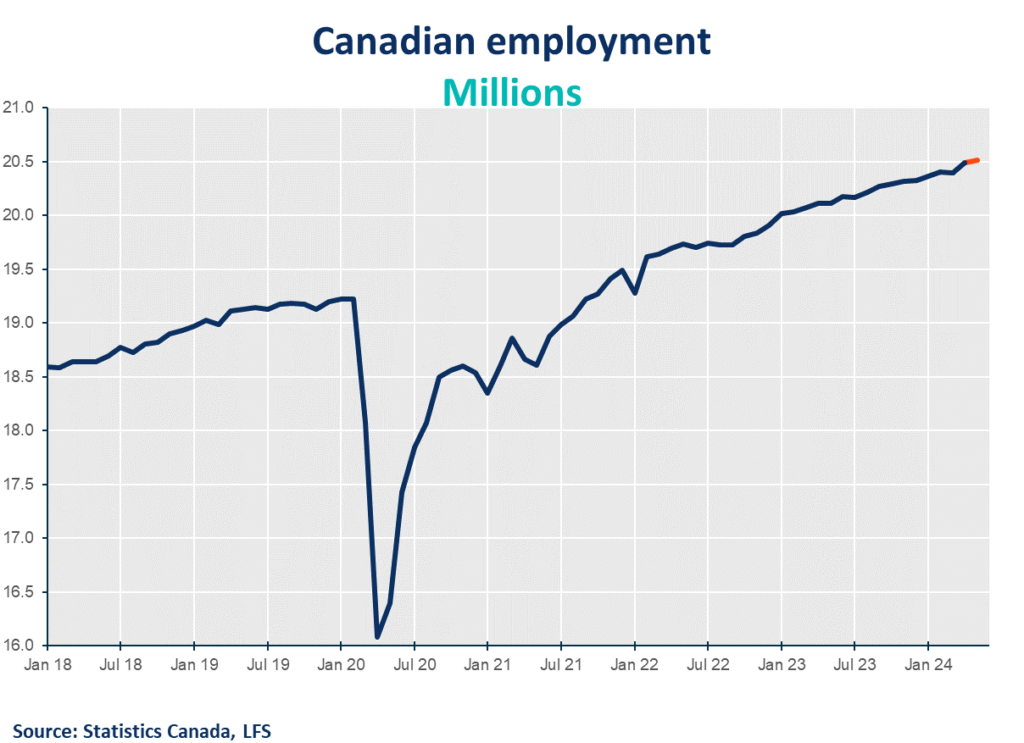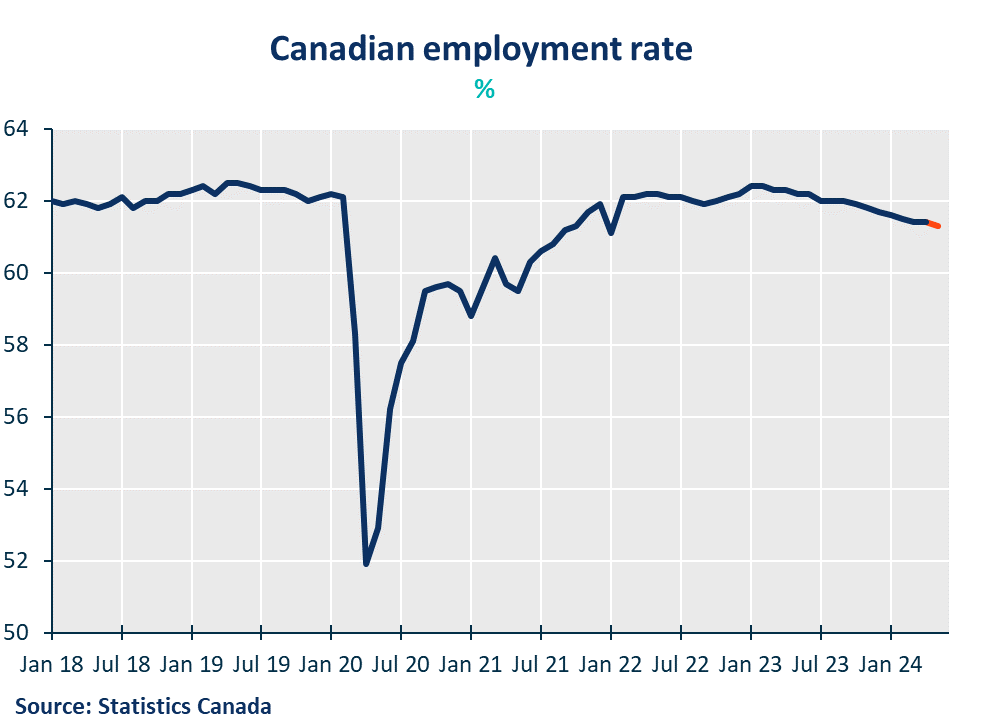Commentaries /
LFS May 2024: Unemployment rate continues to rise as the job market weakens
LFS May 2024: Unemployment rate continues to rise as the job market weakens
May’s job report came in line with market expectations, confirming that Canada’s labour market is cooling down.



Marwa Abdou

May’s job report came in line with market expectations, confirming that Canada’s labour market is cooling down. The unemployment rate ticked up to 6.2%, with only a modest 27,000 jobs added (versus a consensus of 22,000) following April’s strong gain. The market is showing some major frailties: unemployment is up amongst all major demographic groups, especially youth, and job growth was wholly in part-time positions, as Canadians face a slower time finding work.
This was the first major release after the Bank of Canada kicked off the easing cycle earlier this week. The acceleration in average hourly wages to 5.1% (from 4.7%) is one area of concern that the Bank will be keeping a close eye on. Given our perennially weak labour productivity performance, if wages remain elevated, that could slow the pace of future rate cuts.
Marwa Abdou, Senior Research Director, Canadian Chamber of Commerce
KEY TAKEAWAYS
- Continuing its softening streak, Canadian employment was little changed in May (+27K, 0.1%) following a big jump in April (+90K).
- Total hours worked also were unchanged but are up by 1.6% from a year earlier.
- The unemployment rate ticked slightly up by 0.1 percentage point (ppt) to 6.2%. The labour market continues to weaken, in the context of strong population growth. Hiring demand is slowing and people are facing increasing challenges finding work. This move also continues the upward trend in the unemployment rate from April 2023, which is up a cumulative 1.1 ppts over the last 13 months.
- Part-time employment increased (62K, +1.7%) while full-time employment contracted (-36K; -0.2%). As part-time employment continues to outpace full-time employment growth this is weighing on hours worked. Involuntary part time work has also increased.
- By sector, job gains were concentrated in health care and social assistance (30K, +1.1%) and finance, insurance, real estate and leasing (+29K; +2.0%). This was offset by declines in construction (30K, -1.9%) and transportation and warehousing (-21K; -1.9%).
- Youth employment (ages 15 to 24) is one area where the market remains quite frail as May’s employment rate was unchanged (55.6%) and has been on a major downward trend after reaching a recent high of 59.4% in March 2023. Youth unemployment was also the largest recorded increase across all major demographic groups – all of which recorded up ticked unemployment rates. This in large part has to do with increased competition in the market as the share of millennials and generation Z in the country’s population is increasing, while the reverse is true for baby boomers and generation X.
- Average hourly wage growth increased 5.1% on a year-over-year basis following April’s figures (4.7%).
SUMMARY TABLES



CHARTS





Other Commentaries

Oct 19, 2022
September 2022 Consumer Price Index data: Food and services prices still rising, no progress on core inflation

Sep 20, 2022
August 2022 Consumer Price Index data: Finally some good news on Canadian inflation.

Aug 16, 2022